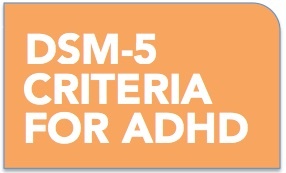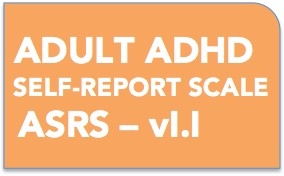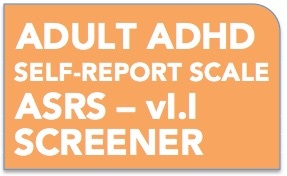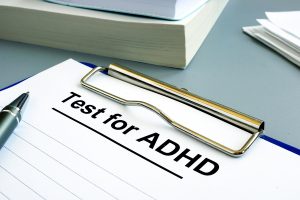ADHD Symptoms in Adults & Children
What are the symptoms of ADHD and ADD?
Are there specific signs, habits, quirks, or obvious behaviors?
Short answer: Yes.
What You Should Know About ADHD
We always recommend that you see a doctor for a proper ADHD diagnosis. But first, there’s something that you can do right now that will make a big difference for you. It’s a very good idea to understand what the symptoms of Attention Deficit Hyperactivity Disorder are. Find out what all of the symptoms are. And which of them sound familiar to you. Not all of them will. Why? ADHD involves many parts of the brain, and over 100 suspect genes have been identified.
The screeners and symptoms list in the article below are useful tools to find out what ADHD is. Take your completed screener to your healthcare professional. The screener is one of the tools an ADHD expert will use in the diagnostic process. Win – win! If you’re too excited to wait and read on, we’ve included them here:

Struggling? Could It Be ADHD?
Here’s what you should know:
- The core symptom of ADHD is Problems With Attention. How does that show up in real life? Forgetfulness, procrastination, overwhelm, disorganization, losing track of things, thoughts, or conversations, tuning out, not listening, and feeling overwhelmed.
This is known as The Predominantly Inattentive Subtype of ADHD. (Some call this ADD for short.)
- If you also struggle with Hyperactivity and Impulsivity you may have the more familiar version of ADHD, known as The Combined Subtype. (ADHD for short.)
Hyperactivity and Impulsivity may sound vague – It means being restless, mercurial, impatient, overly talkative, super sensitive, driven, fidgety, unable to relax.
As adults, most of us have learned to internalize the agitation and impatience. And that can be exhausting.
- Doctors used to think kids grew out of ADHD, but studies have revealed that about 60% of kids diagnosed with ADHD were still struggling with these symptoms as adults. (Source: Weiss G., 1993)
- If you are an adult who is struggling, it could be ADHD. ADHD has been well-diagnosed, and even over-diagnosed in children in some places in the past 20 years. However, many adults were not diagnosed when they were younger.
As more adults understand ADHD symptoms and seek help, people in their 60’s and 70’s are now getting a diagnosed. They finally have an explanation that makes sense to them. Many were originally misdiagnosed with Depression, Anxiety, or simply dismissed as lazy, dumb, weak, or unreliable.
- What looks like ADHD might actually be something else like Depression or Anxiety, or a Thyroid problem. A trained healthcare professional who understands ADHD will be able to help you sort it out.
- ADHD is situational. What does that mean? Here’s an example. Blurting things out is helpful if you’re doing improv comedy on stage. Blurting things out is not helpful if you interrupt someone who is in the middle of sharing a very personal story with you!
It’s Not Just a List of Symptoms
Everyone forgets things, loses stuff, gets overwhelmed. What makes it a disorder?
- The symptoms must be present in childhood. Not just lately, or if you recently started a new job, or quit college, or your marriage ended. (ADHD is strongly genetic. It runs in families.)
A sibling, parent, or friend who knew you in childhood may provide a better perspective on what you were like. (We can be notoriously bad at self assessment, or remembering what life was like.)
That said, a brain injury or concussion to the pre-frontal cortex can produce many of the symptoms of ADHD. Again, a doctor can tell.
- It is called a “disorder” because it is impairing. When ADHD symptoms
go on over time, and are holding you back it’s considered a disorder. Is it costing you opportunities, relationships, money, and self-esteem? It’s worth getting handled, and much can be done. No one shows up at their doctor’s office because they’re doing great.
- ADHD symptoms must be impairing. And not in just one situation. For example, not just when you’re at work.

How is adult ADHD or ADD distinct?
For adults with ADHD the problems around Inattention are the most apparent.
Hyperactivity and Impulsivity that may have been apparent in childhood, tend to soften with age. Adults shut down, or turn their excess energy into nervous tension, anxiety, or depression.
By adulthood most adults have developed a few coping strategies and only suffer from 4 or 5 of the symptoms, rather than 6 or more, but it’s still a problem.
Many adults who are undiagnosed have found a holistic practices like yoga, mindful meditation, and exercise lessen their symptoms.
Others find outlets for their energy through an exciting or engaging career (First Responders, Entrepreneurs, Athletes, Entertainers) or pursuing hobbies that provide lots of challenge.
You don’t HAVE TO take ADHD Medications. For some people they can make an almost instant and dramatic impact, “For me it’s like the best cup of coffee in the world. And without the jitters.”

The Downside of ADHD – The Costs
Being restless and impulsive can lead to constant novelty seeking (multiple job changes, frequent moves, a million things started but never finished)
People with undiagnosed and untreated ADHD may find it leads to high-risk behaviour, or addictions to shopping, sex, or gambling.
Also higher rates of smoking and illegal drug use (Source: Pelham WE, 2007) and:
- Being at-fault for multiple car accidents
- Multiple divorces
- Bankruptcy or financial problem
- Feeling frustrated, impatient
- Sense of underachieving
- Losing track of what you were saying
Almost 70% of adults with ADHD have also struggled with a secondary issue like Depression, Anxiety, Substance Abuse, etc.
About 40% of adults have three or more diagnosis. (NIH – comorbid disorders)
A life of undiagnosed ADHD that hasn’t been dealt with adds a huge layer of stress. In adults, ADHD rarely travels alone.
Getting A Reliable Diagnosis
Doctors arrive at an ADHD diagnosis by using a number of rating scales and an interview.
The physician’s main reference is the latest edition of the Diagnostic and Statistical Manual (DSM-5). It lists the criteria for all mental health issues.
ADHD Diagnostic Criteria
The following is a list of the criteria from the DSM-5 in shortened form. See this as a starting point and if it continues to sound familiar, look deeper, as it might well be ADHD.
People with ADHD show a persistent pattern of inattention and/or hyperactivity–impulsivity that interferes with functioning or development:
Part 1 – Inattention:
Six or more symptoms of inattention for children up to age 16 years, or five or more for adolescents age 17 years and older, and adults; symptoms of inattention have been present for at least 6 months, and they are inappropriate for developmental level.
OFTEN:
- Does not give close attention to details or makes careless mistakes in schoolwork, work, or other activities
- Has trouble keeping attention on tasks or play activities
- Does not seem to listen when spoken to directly
- Does not follow instructions and fails to finish schoolwork, chores, or duties in the workplace (not due to oppositional behavior or failure to understand instructions)
- Has trouble organizing tasks and activities
- Avoids, dislikes, or doesn’t want to do things that take a lot of mental effort for a long period of time (such as schoolwork or homework)
- Loses things needed for tasks and activities (e.g. toys, school assignments, pencils, books, or tools)
- Easily distracted
- Forgetful in daily activities
Part 2 – Hyperactivity and Impulsivity
Six or more symptoms of hyperactivity-impulsivity for children up to age 16 years, or five or more for adolescents age 17 years and older and adults; symptoms of hyperactivity-impulsivity have been present for at least 6 months to an extent that is disruptive and inappropriate for the person’s developmental level.
OFTEN:
- Fidgets with hands or feet or squirms in seat
- Gets up from seat when remaining in seat is expected
- Runs about or climbs when and where it is not appropriate (adolescents or adults may feel very restless)
- Has trouble playing quietly or enjoying leisure activities quietly
- Is often “on the go” or often acts as if “driven by a motor”
- Talks excessively
- Blurts out answers before questions have been finished
- Has trouble waiting one’s turn
- Interrupts or intrudes on others (e.g., butts into conversations or games)
In addition, the following conditions must be met:
- Several inattentive or hyperactive-impulsive symptoms were present before age 12 years.
- Several symptoms are present in two or more settings, (such as at home, school or work; with friends or relatives; in other activities).
- There is clear evidence that the symptoms interfere with, or reduce the quality of, social, school, or work functioning.
- The symptoms are not better explained by another mental disorder (such as a mood disorder, anxiety disorder, dissociative disorder, or a personality disorder).
- The symptoms do not happen only during the course of schizophrenia or another psychotic disorder.
Based on the types of symptoms, three kinds (or presentations) of ADHD can occur:
Combined Presentation: if enough symptoms of both criteria inattention and hyperactivity-impulsivity were present for the past 6 months
Predominantly Inattentive Presentation: if enough symptoms of inattention, but not hyperactivity – impulsivity, were present for the past six months
Predominantly Hyperactive-Impulsive Presentation: if enough symptoms of hyperactivity – impulsivity, but not inattention, were present for the past six months.
Adult ADHD Symptoms or Signs
Adults and children with ADHD may have some of the following symptoms, but not necessarily all of them.
- A lifelong history of difficulty with attention
- A history of disruptive or impulsive behavior
- Organizational skill problems (time management difficulties, missed appointments, frequently late, unfinished projects)
- Erratic work history (changing jobs frequently, unprepared for meetings, projects late, coworkers, & clients are frustrated)
- Anger control problems (with authority figures, over controls as parent, fights with coworkers or child’s teachers, episodes of rage)
- Marital problems (spouse complains that you do not listen, speaking without thinking, impulsive, forget important events)
- Being overly talkative, interrupt frequently or inappropriately, speak too loudly
- Parenting problems (difficulty maintaining routines, inconsistency in dealing with the children)
- Money management problems (impulsive purchases, run out of money, fail to pay bills or do taxes, history of bankruptcy)
- Substance use or abuse: alcohol or marijuana or excessive caffeine use
- Addictions: overeating, compulsive exercise or gambling, sexual avoidance or addiction
- Frequent accidents
- Problems with driving (speeding tickets, serious accidents, license revoked or overly cautious to compensate for attention problems)
- A college student who is frustrated, and reduces course load or has difficulty completing assignments
- Being a parent of a child with ADHD
- An ADHD diagnosis as a child and continuing to have problems
- People close to you saying that you are just like a child, or relative with ADHD, or that you as have ADHD symptoms
- Not just coping poorly, but significantly impaired and at high risk of developing secondary (co-morbid) disorders i.e. anxiety & depression
- Do not feel successful. A feeling of underachieving
- Spend more energy to accomplish the same amount of work as your peers
- Use coping strategies to compensate for weaknesses, but still having problems with career and work relations, or you are a workaholic
- You diagnosed yourself, but you still need to go through a complete assessmen
Adult ADHD is Rarely Solo
About 70% of adults with ADHD suffer from a secondary mental health issue. About 40% of adults with ADHD suffer from three or more issues. (Also see: Adult ADHD & comorbid disorders)
People with ADHD are reported to have much higher rates of:
Addiction
Depression
Anxiety
Learning Disabilities
Dyslexia
Social Phobia
Obsessive Compulsive Disorder
Tourette Syndrome
Bi-Polar
P.T.S.D.
Oppositional Defiant Disorder
Conduct Disorder
Antisocial
Anorexia
Bulimia
Schizophrenia
Borderline Personality Disorder
(Please consult your healthcare professional for a diagnosis if you are struggling)
ADHD is a common disorder affecting nearly 4.4% of adults. It is possible to find a niche that allows some symptoms to be functional, however, the fact is that the majority of adults with this disorder tend to be impaired in other parts of their life. Awareness of the symptoms often happen when their own children have this genetically borne disorder diagnosed.
Wondering if you may have ADHD? Take our short online quiz – Do I Have ADHD?
American Psychiatric Association: Diagnostic and Statistical Manual of Mental Disorders, 5th edition,
Arlington, VA., American Psychiatric Association, 2013
Given the nature of the disorder, it is not surprising that many people with ADHD often have other disorders like depression or substance abuse issues. Diagnosis and education (learning about you) are the corner stones of the treatment. Medication may also be a useful tool.
For More Information See:
23 Signs You Do Not Have ADHD – One of our most popular blogs by Rick Green
5 Superpowers of ADHD – a blog by Rick Green
Common ADHD Symptoms in Women – a blog by Keath Low
How Do I Find Out if I Have ADHD? – a blog by Rick Green
Source: Symptoms & Diagnosis of ADHD




